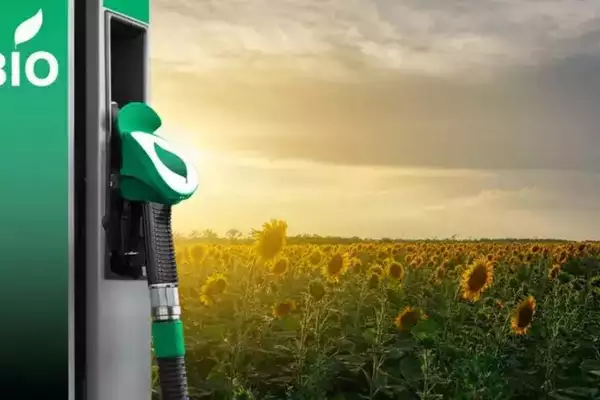The Food Ministry has allowed ethanol producers to participate in the Open Market Sale Scheme of rice from August to October 2024.
- Additionally, it has permitted the use of sugarcane juice, sugar syrup, B-heavy molasses, and C-heavy molasses for ethanol production during the 2024-2025 period, reversing last year’s ban.
Reasons behind the recent order
- Managing Excess Stock: India holds surplus rice stocks exceeding 540 lakh tonnes.
- Boosting Renewable Energy: By enhancing ethanol production, the order contributes to India’s energy security and self-reliance through increased renewable energy usage.
- Economic Stability: The reversal of the ban ensures better utilization of agricultural by-products without disrupting sugar availability for domestic consumption.
About Ethanol Blending:
- Definition: Ethanol is a biofuel produced from organic matter, primarily sugarcane in India, through fermentation. It is high in oxygen content, allowing for more thorough combustion in engines.
- Environmental Impact: Ethanol blending reduces vehicular emissions, including carbon monoxide (CO), hydrocarbons (HC), and nitrogen oxides (NOx). E20 fuel, which has a 20% ethanol blend, can lower CO emissions by 50% in two-wheelers and 30% in four-wheelers.
Ethanol Blending Program
- Objective: To blend ethanol with petrol to reduce import dependence, save foreign exchange, and improve energy security.
- Target: Achieve 20% ethanol blending (E20) by 2025-2026.
- Current Status: As of 2022-2023, over 500 crore liters of ethanol have been blended with petrol, with a current blending rate exceeding 15%.
Challenges
- Producers: Issues with feedstock availability and weather-related challenges.
- Oil Marketing Companies: High costs for additional storage tanks, logistics, and emissions management.
- Vehicle Manufacturers: Need to optimize engines for higher ethanol blends and conduct durability studies and field trials.
- Limited Sugarcane Availability: Diverting land for sugarcane production could stress other crops and impact food prices.
- Water Footprint: High water usage for ethanol production, especially from non-rainwater sources, poses a sustainability challenge.
Key Initiatives
- National Policy on Biofuels (2018): Provides a framework for promoting biofuels in India.
- Reduced GST on Ethanol: From 18% to 5% for the Ethanol Blending Program.
- Legal Amendments: Changes to the Industries (Development & Regulation) Act, 1951, to facilitate the smooth movement of ethanol across the country.
Way Forward
- Encouraging Water-Saving Crops: Promote ethanol production from crops like maize that require less water.
- Production from Non-Food Feedstock: To prevent a trade-off with food security, focus on producing ethanol from non-food sources.
- Clustering of Ethanol Distilleries: Establish distilleries in clusters and ensure effective transfer of ethanol from surplus to deficit states.
- Expanding Alternatives: Focus on improving the capacity of biorefineries to use crop residue and explore commercially viable biofuels like Jatropha.
Ref: Source
| UPSC IAS Preparation Resources | |
| Current Affairs Analysis | Topperspedia |
| GS Shots | Simply Explained |
| Daily Flash Cards | Daily Quiz |
Frequently Asked Question:
What is ethanol blending in India?
Ethanol blending involves mixing ethanol, a biofuel from sugarcane, with petrol to reduce import dependence and improve energy security.
Why did the Food Ministry reverse the ban on ethanol production materials?
The reversal ensures better utilization of agricultural by-products without affecting domestic sugar availability.
What are the advantages of using ethanol as a fuel?
Ethanol as a fuel reduces greenhouse gas emissions and can be produced from renewable resources like sugarcane.
How does ethanol blending impact fuel efficiency?
Ethanol has a lower energy content than petrol, which can slightly reduce fuel efficiency but significantly lowers emissions.



